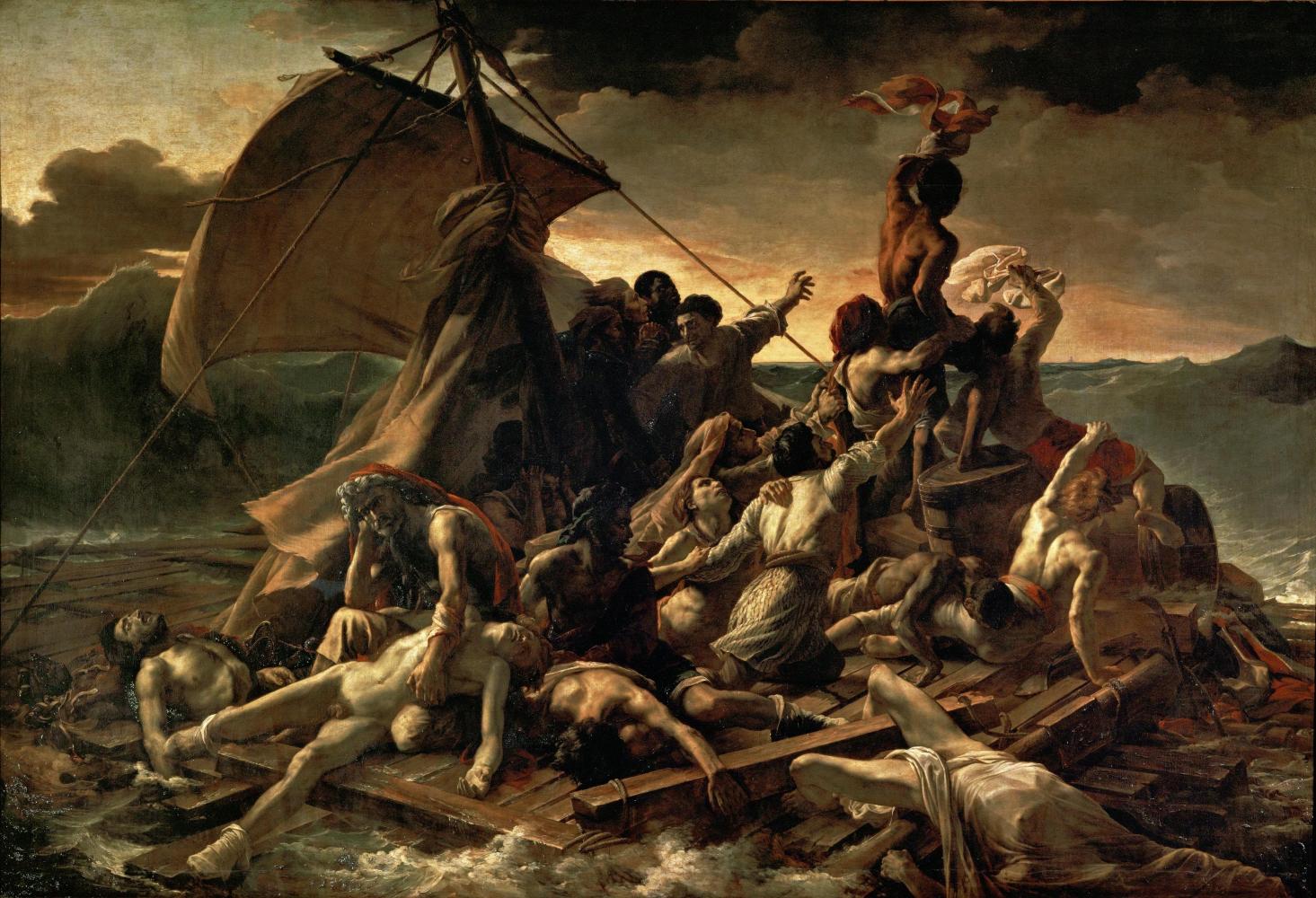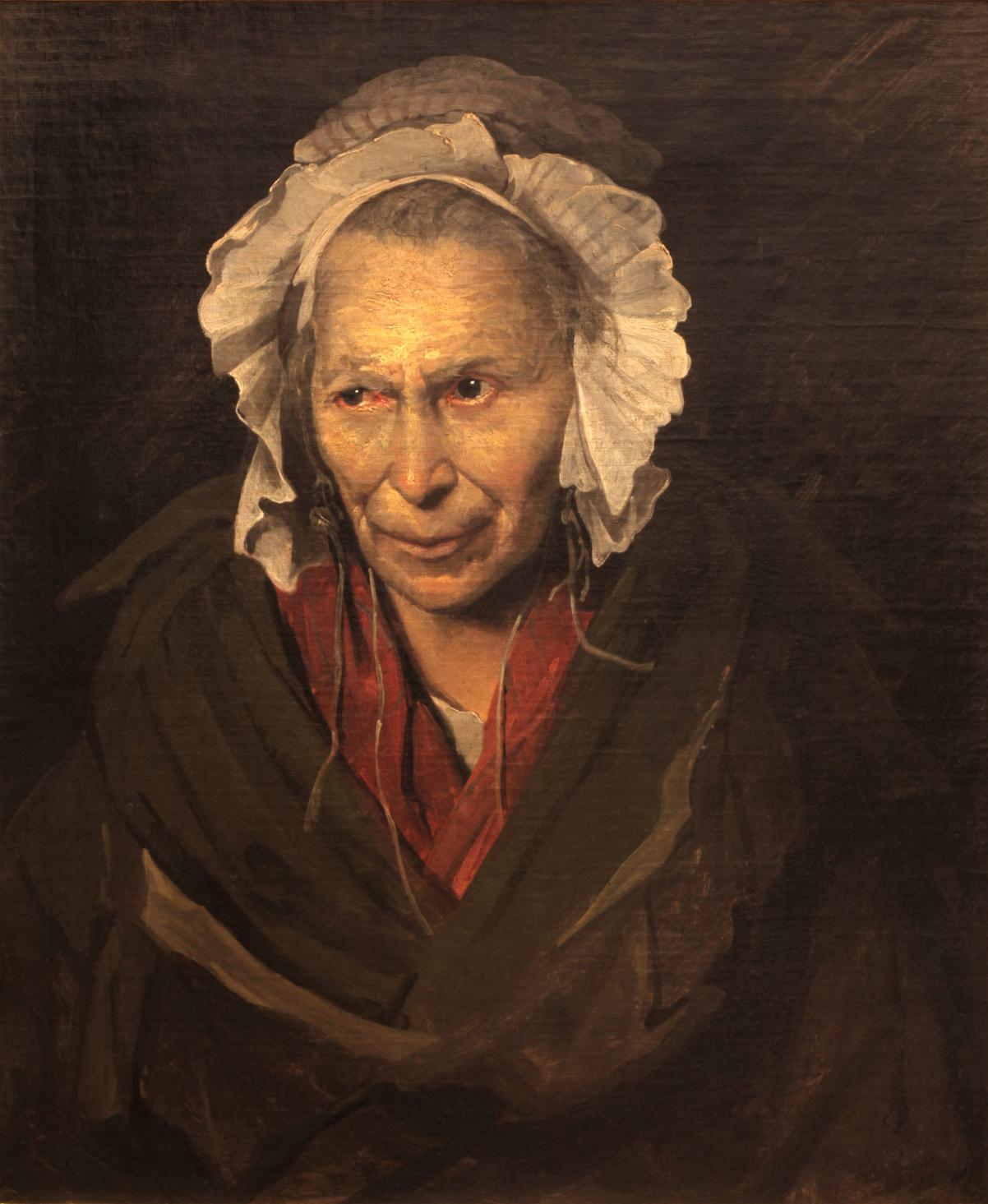Théodore Géricault
Géricault was born in Rouen, the son of wealthy parents, and unlike the majority of artists he had a measure of financial independence all his life. He was fanatically interested in horses, both as a painter and as a reckless rider, and his tragic death at the age of thirty-two was hastened by the after-effects of riding accidents. But in about twelve years he produced enough work to leave a substantial legacy of paintings when he died.
He trained in the studios of two French painters, Carle Vernet and Guerin, but Rubens, Michelangelo, Caravaggio and the Venetian painters were perhaps the strongest influences on his work. He developed a superb flair for composition and a dramatic style that are clearly displayed in The Raft of the Medusa.
In 1816 a French military transport frigate, the Medusa, laden with settlers and soldiers for Senegal, had been wrecked off the coast of West Africa. The incident caused a scandal at the time because of the captain’s ineptitude, the lack of lifeboats, and the number of people drowned as a result. A hundred and fifty passengers and crew were crammed on to a makeshift raft, but two weeks later only fifteen of them were alive to tell the tale.
 Géricault worked for over a year on the huge painting, some sixteen feet high
and over eighteen feet wide, in a special studio hired for the purpose. He
launched a raft into the sea to see how it would work; he interviewed
survivors; and he visited hospitals and morgues to make studies of the ill, the
dying and the dead.
Géricault worked for over a year on the huge painting, some sixteen feet high
and over eighteen feet wide, in a special studio hired for the purpose. He
launched a raft into the sea to see how it would work; he interviewed
survivors; and he visited hospitals and morgues to make studies of the ill, the
dying and the dead.
He chose to illustrate the moment when some of the survivors first glimpsed their rescue ship, the Argos, on the horizon, but it vanished from sight, although later returned to pick them up. Some of the raft’s passengers were seized with excitement and tried desperately to attract the ship’s attention, but others, if they were not already dead, were sunk in desolation and too weak to move. The subdued colours are sombre and expressive of the horror of the whole event. The sharply contrasting light and shade on the figures is a clear indication of the influence of Caravaggio, and their bodies are wonderfully taut and muscular, like those of Michelangelo.
The composition is based on the tension between two diagonals: the raft itself and the movement of the figures take the eye inwards from the left, while the ropes and the mast, with its billowing sail, strain back to hold the structural balance.
 Géricault’s ambition was ‘to shine, to illuminate, to astonish the world’, but
The Raft of the Medusa was considered by some as an attack on a government
which had allowed inefficiency to lead to tragedy, and it was given a
lukewarm reception when it was first shown in Paris in 1819. Now, however, it
is appreciated as an outstanding work of the French Romantic movement,
brilliantly constructed and intensely powerful.
Géricault’s ambition was ‘to shine, to illuminate, to astonish the world’, but
The Raft of the Medusa was considered by some as an attack on a government
which had allowed inefficiency to lead to tragedy, and it was given a
lukewarm reception when it was first shown in Paris in 1819. Now, however, it
is appreciated as an outstanding work of the French Romantic movement,
brilliantly constructed and intensely powerful.
This painting is variously titled The Mad Woman, The Insane Woman, The Monomania of Envy and The Hyena of the Salpêtrière. Whilst in England, Géricault made studies of the poverty and misery to be found on the streets of London. In the same vein, on his return to Paris, he visited La Salpêtrière, an insane asylum, where he made portraits of the inmates in a compassionate attempt to capture and understand the image of mental illness.



